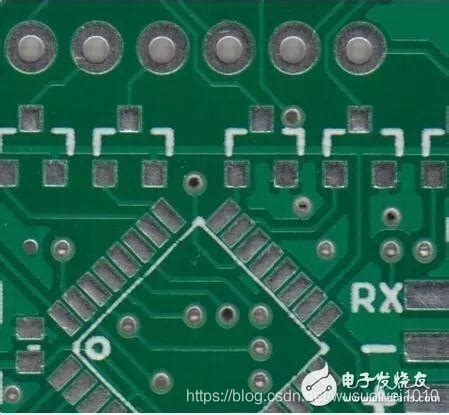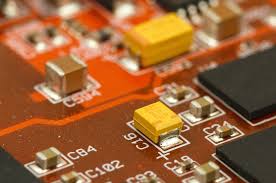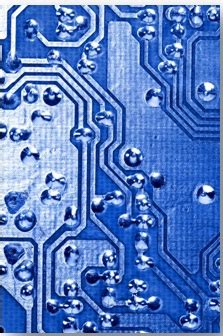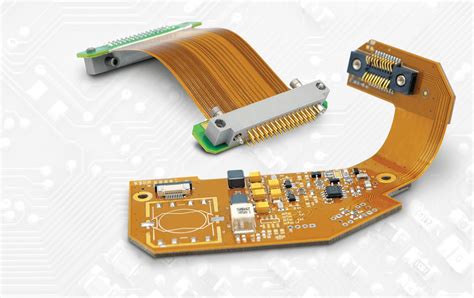Optimizing PCB Manufacturing Processes for High-Volume Production

Key Takeaways
When scaling PCB manufacturing operations, balancing efficiency with quality requires strategic investments. PCB manufacturing companies often face challenges in maintaining IPC compliance while managing PCB manufacturing cost—a hurdle that can be addressed through precision depaneling systems. These tools minimize mechanical stress on components, reducing defects by up to 40% in high-volume workflows.
Automated microsectioning solutions further enhance consistency, enabling real-time quality checks without slowing production. For example, integrating optical inspection with depaneling machines ensures boards meet tolerance thresholds before moving to assembly. This approach not only streamlines the PCB manufacturing business but also mitigates rework expenses.
| Traditional Methods | Automated Solutions |
|---|---|
| Manual depaneling | Laser/routing systems |
| Destructive testing | Automated microsectioning |
| 12-18% defect rate | <5% defect rate |
By adopting these technologies, you position your facility to handle mass orders while adhering to industry standards. Transitioning to automated workflows also future-proofs operations, as scalability becomes critical when competing in global markets. The next sections will explore how specific tools align with these objectives, ensuring your processes remain both agile and compliant.

Precision Depaneling Solutions for PCB Production
When scaling PCB manufacturing operations for high-volume output, precision depaneling becomes critical to maintaining quality and efficiency. Traditional methods like manual breaking or blade-based cutting often introduce mechanical stress or microfractures, compromising board integrity. Modern depaneling systems leverage laser technology or programmable router arrays to achieve sub-millimeter accuracy, minimizing waste and ensuring consistent separation of panels.
For PCB manufacturing companies, investing in advanced depaneling tools directly impacts PCB manufacturing cost by reducing material loss and rework rates. Automated systems also enable faster cycle times, allowing you to meet tight deadlines without sacrificing compliance with IPC-6012 or IPC-A-600 standards.
Tip: When evaluating depaneling equipment, prioritize systems with real-time monitoring to detect alignment deviations early, preventing costly batch failures.
By integrating these solutions into your PCB manufacturing business, you eliminate bottlenecks caused by manual handling while protecting sensitive components like BGA packages or fine-pitch traces. This approach not only streamlines workflows but also enhances repeatability—a key factor in high-volume environments where even minor errors scale into significant losses.

Automated Microsectioning in High-Volume PCB Workflows
When scaling PCB manufacturing operations, integrating automated microsectioning systems becomes critical for maintaining quality without compromising speed. Unlike manual methods, these systems use precision imaging and robotic controls to analyze cross-sectional layers of boards, ensuring compliance with IPC standards while processing hundreds of units per hour. For PCB manufacturing companies, this eliminates human error in detecting voids, delamination, or plating inconsistencies—defects that often lead to costly rework or field failures.
By automating microsectioning, you reduce PCB manufacturing cost through minimized material waste and faster inspection cycles. Advanced algorithms categorize defects by severity, allowing engineers to prioritize corrective actions in real time. This is particularly valuable in PCB manufacturing business models where tight margins demand efficiency at every stage. Additionally, automated systems generate traceable reports, simplifying audits and reinforcing accountability across supply chains.
The key lies in balancing throughput with accuracy. While high-speed workflows are essential for volume production, undersampling risks missing critical flaws. Modern solutions address this by combining statistical sampling strategies with AI-driven anomaly detection, ensuring even subtle deviations are flagged. When optimized, automated microsectioning becomes a strategic asset, enabling your facility to meet escalating demand without sacrificing the reliability that defines premium PCB outputs.

Reducing Component Stress Through Advanced Depaneling
When scaling PCB manufacturing operations, managing component stress during depaneling becomes critical to maintaining product reliability. Traditional mechanical cutting methods often introduce vibrations and mechanical forces that compromise delicate components, leading to microcracks or solder joint failures. By integrating precision depaneling systems—such as laser cutting or programmable routing—you minimize physical contact with boards, reducing stress concentrations by up to 60% compared to manual methods. This approach not only preserves component integrity but also aligns with the cost-efficiency goals of PCB manufacturing companies, as fewer defects translate to lower rework rates and material waste.
Advanced systems also enable dynamic speed adjustments based on board thickness and material composition, ensuring consistent quality across high-volume batches. For PCB manufacturing businesses, this means faster throughput without sacrificing compliance with IPC-6012 standards for structural integrity. Additionally, automated optical inspection (AOI) integration allows real-time monitoring of depaneling accuracy, further mitigating risks of stress-related failures. By prioritizing these technologies, you directly address PCB manufacturing cost challenges linked to yield loss while future-proofing production workflows against evolving design complexities.
IPC Compliance Strategies for PCB Manufacturing
Maintaining IPC compliance is non-negotiable for high-reliability applications, especially in PCB manufacturing workflows where consistency and quality are paramount. To align with IPC standards, you must integrate automated inspection systems that validate trace widths, hole diameters, and solder mask coverage at scale. Leading PCB manufacturing companies leverage statistical process control (SPC) tools to monitor deviations in real time, ensuring every batch meets IPC-A-600 and IPC-6012 criteria.
Reducing PCB manufacturing cost while adhering to compliance often hinges on optimizing material usage and minimizing rework. For instance, implementing automated optical inspection (AOI) reduces human error by 30–40%, directly lowering scrap rates. Additionally, standardized documentation practices—like digital traveler systems—streamline audits and traceability, which is critical for PCB manufacturing business contracts in regulated industries like aerospace or medical devices.
Balancing speed and precision requires aligning depaneling and microsectioning processes with IPC-2221 design guidelines. By adopting laser-based depaneling for sensitive components, you mitigate mechanical stress risks while maintaining throughput. This approach not only safeguards compliance but also reinforces your reputation as a supplier capable of delivering zero-defect boards at volume.

Optimizing PCB Workflows with Automated Systems
When scaling PCB manufacturing operations, integrating automated systems becomes critical to balancing speed and precision. By replacing manual processes with robotic depaneling tools and AI-driven inspection modules, PCB manufacturing companies can achieve consistent output while minimizing human error. For instance, automated optical inspection (AOI) systems detect microscopic defects in real time, allowing immediate corrections before issues escalate. This not only reduces PCB manufacturing cost by cutting material waste but also accelerates throughput—a decisive advantage in high-volume environments.
Transitioning to automation also streamlines workflow synchronization. Machines equipped with IoT sensors share data across production stages, enabling predictive maintenance and adaptive process tuning. For example, if a depaneling tool shows signs of wear, the system reroutes tasks to alternate equipment without halting production. Such agility ensures compliance with IPC-6012 standards while maintaining tight tolerances, even under demanding schedules.
For PCB manufacturing business models targeting mass production, automation’s scalability is transformative. Modular systems allow you to expand capacity incrementally, avoiding overinvestment during initial phases. Additionally, automated traceability features document every manufacturing step, simplifying audits and quality assurance. By prioritizing these technologies, you position your operations to meet rising demand without compromising on reliability or regulatory adherence.
High-Volume PCB Manufacturing Essentials
When scaling PCB manufacturing operations for mass production, balancing speed, precision, and cost becomes critical. PCB manufacturing companies must prioritize scalable processes that maintain consistency across thousands of units while addressing PCB manufacturing cost pressures. Automated depaneling systems, for example, minimize manual handling to reduce errors and component stress, ensuring boards meet IPC Class 3 standards without compromising throughput.
Integrating advanced tooling, such as laser cutting or programmable router systems, allows for tighter tolerances in high-volume workflows. These technologies not only improve yield rates but also lower long-term PCB manufacturing business expenses by reducing material waste. Additionally, real-time monitoring tools help identify bottlenecks early, enabling proactive adjustments to maintain cycle times.
To stay competitive, focus on standardizing workflows across design, fabrication, and testing phases. This alignment ensures compatibility with automated microsectioning and inspection stages, which are vital for detecting latent defects in bulk orders. By optimizing equipment utilization and labor allocation, you can achieve economies of scale without sacrificing quality—a key differentiator in high-volume PCB manufacturing.

Enhancing PCB Quality with Precision Cutting Tools
When optimizing PCB manufacturing workflows, the choice of depaneling tools directly impacts both product reliability and operational efficiency. Precision cutting systems, such as laser-based or rotary blade technologies, minimize mechanical stress on delicate components—a critical factor for maintaining signal integrity in high-density designs. For PCB manufacturing companies, investing in advanced depaneling equipment reduces microfractures and edge burrs, which are common culprits behind field failures. This not only aligns with IPC-6012 standards for structural integrity but also lowers long-term PCB manufacturing cost by reducing rework rates.
Transitioning from manual to automated cutting solutions ensures consistent results across large batches, a necessity for scaling PCB manufacturing business operations. For instance, adaptive depth control in modern systems prevents overcutting, preserving via structures and solder masks. Additionally, integrating real-time monitoring tools allows you to detect deviations early, ensuring compliance without sacrificing throughput. By prioritizing precision in depaneling, you create a ripple effect: fewer defects mean faster time-to-market and stronger client trust—key advantages in competitive high-volume markets.
Streamlining PCB Production for Mass Volume Output
When scaling PCB manufacturing operations, balancing speed with precision becomes critical. Advanced depaneling systems enable PCB manufacturing companies to separate boards with minimal mechanical stress, preserving component integrity even at high throughput rates. By integrating automated optical inspection (AOI) with precision cutting tools, you reduce manual intervention, which directly impacts PCB manufacturing cost through fewer defects and faster cycle times.
To maintain consistency across large batches, consider laser depaneling for complex designs or router-based systems for standard panels. These methods align with IPC-6012 standards while eliminating microcracks that compromise reliability. For PCB manufacturing business models prioritizing scalability, pairing automated microsectioning with real-time analytics ensures rapid quality checks without bottlenecking workflows.
Transitioning to modular equipment designs allows flexible reconfiguration as order volumes fluctuate. This approach not only optimizes floor space but also future-proofs production lines against evolving industry demands. By prioritizing data-driven process controls, you create a feedback loop that continuously refines tolerances and material usage—key factors in sustaining profitability during high-volume surges.
Conclusion
As you refine your approach to PCB manufacturing, it becomes clear that balancing efficiency with quality requires strategic investments. For PCB manufacturing companies aiming to scale operations, adopting precision depaneling systems and automated microsectioning not only accelerates throughput but also minimizes PCB manufacturing cost by reducing material waste and rework. These technologies ensure compliance with IPC standards while mitigating component stress, which is critical for maintaining reliability in high-volume outputs.
Transitioning to optimized workflows demands a holistic view of your PCB manufacturing business. By integrating advanced tools early in the production chain, you create a foundation for consistent quality across large batches. This approach not only streamlines timelines but also strengthens your competitive edge, as clients increasingly prioritize suppliers capable of delivering error-free boards at scale.
Ultimately, the key lies in aligning technological upgrades with operational goals—whether cutting costs, enhancing precision, or meeting compliance benchmarks. For businesses navigating the complexities of mass production, these strategies transform challenges into measurable advantages, ensuring long-term viability in a demanding market.
FAQs
How do precision depaneling systems affect PCB manufacturing costs?
Precision depaneling minimizes material waste and reduces rework rates, directly lowering PCB manufacturing cost by maintaining tight tolerances. This efficiency becomes crucial when scaling production volumes in PCB manufacturing business operations.
What makes automated microsectioning vital for high-volume PCB workflows?
Automated microsectioning ensures consistent quality checks across batches, enabling PCB manufacturing companies to meet IPC compliance standards without slowing throughput. This automation reduces human error risks while maintaining defect detection accuracy.
Can advanced depaneling tools reduce component stress in mass production?
Yes. Laser-based and router depaneling systems distribute cutting forces evenly, protecting delicate components. This directly impacts PCB manufacturing reliability, especially for high-density designs common in modern electronics.
How do workflow optimizations support IPC compliance?
Integrating traceable documentation systems with automated processes creates audit-ready records. For PCB manufacturing companies, this reduces compliance risks and accelerates certifications for regulated industries like aerospace or medical devices.
What factors determine cost efficiency in high-volume PCB production?
Key drivers include material utilization rates, equipment uptime, and defect rates. Partnering with experienced PCB manufacturing business providers often optimizes these variables through tailored process engineering and predictive maintenance strategies.
Ready to Optimize Your Production Line?
Explore how advanced depaneling and microsectioning systems can transform your PCB manufacturing workflow. For tailored solutions that balance quality and scalability, please click here.






